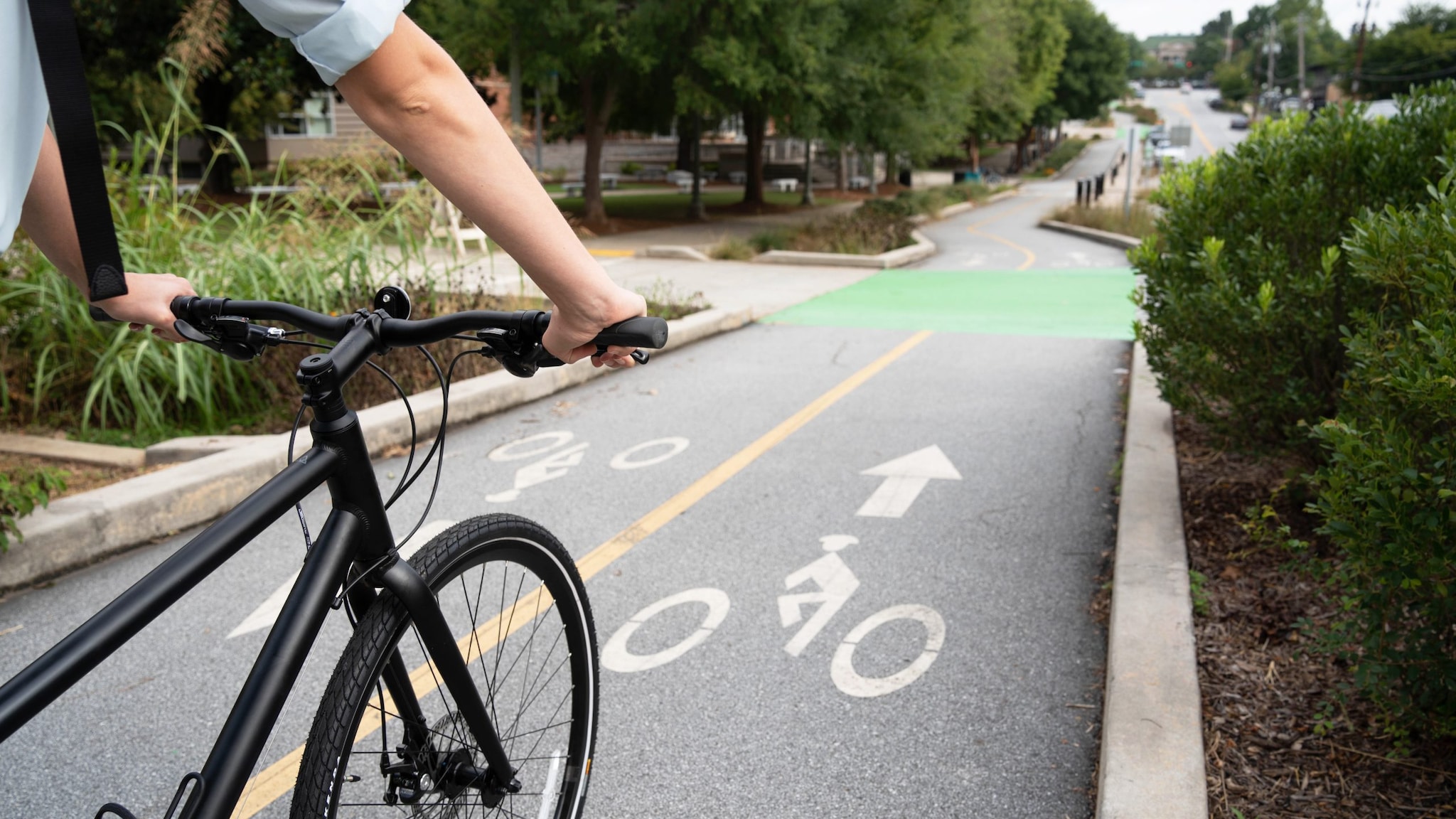Key points
- States and communities can encourage physical activity through community design.
- This page provides definitions of terms used in community design.

Definitions
Active transportation is any self-propelled, human-powered mode of leisure (recreational) or utilitarian transportation. Utilitarian transportation primarily serves practical purposes, such as commuting to work, running errands, or reaching specific destinations.
Activity-friendly districts are created through land use and zoning strategies that encourage a mix of restaurants, offices, housing, or shops in close proximity to one another.
Activity-friendly routes include pedestrian, bicycle, and public transit transportation systems having a direct and convenient connection with everyday destinations. These routes offer physical protection from cars and make it easy to cross the street. The routes can include crosswalks, protected bicycle lanes, multi-use trails, and pedestrian public transit bridges. They are desirable, useful, and ideally/often attractive.
Complete Streets policies support routine, context-sensitive design and operation of streets and communities. They are safe for all pedestrians, regardless of age, ability, or transportation mode. Key features include sidewalks, protected bikeways, special bus lanes, comfortable and accessible transit stops, frequent crossing opportunities, median islands, accessible pedestrian signals, and curb extensions.
Everyday destinations are places people go frequently. Some examples include homes, workplaces, grocery stores, schools, libraries, parks, restaurants, cultural and natural landmarks, and health care facilities.
Form-based codes provide an alternative to conventional zoning that regulates land use based on the separation of uses, such as commercial or residential. Form-based codes focus on the form of buildings. They address:
- The relationship between building exteriors and the public spaces.
- The form and mass of buildings in relation to one another.
- The scale and types of streets and blocks.
Incentives for activity-friendly project evaluation are administrative procedures prioritizing investments in activity-friendly routes as part of Statewide Transportation Improvement Programs or metropolitan regional Transportation Improvement Program. These short-term plans include projects selected as federal transportation investment priorities. Such incentives can originate in projects within a long-term transportation plan and with examples outlined in a longer-term regional and statewide transportation planning process. The long-term plan may span decades—see master plans.
Inclusive fare collection systems are for transit riders without a way to pay cashless transit fares. (Cashless fares may require credit cards, debit cards, or smartphones.) An example of an inclusive fare collection system is the ability to pay in cash.
Increasing physical activity through community design is planning and designing communities with activity-friendly routes. These routes offer a direct and convenient way to actively reach everyday destinations.
Land use refers to how land is used and what is built on it. Land use policy goals include:
- Mixed land use, such as neighborhoods that combine restaurants, offices, housing, or shops.
- Increased residential density, such as sustainable, compact development with housing options that include smaller and multi-family homes.
- Community destinations that are accessible and close to one another.
- Access to public parks or public recreational facilities.
Master (or comprehensive) plan is the adopted official statement from a local government that describes the unified physical design for public and private development of land. The plan can be created using words, maps, illustrations, and/or tables. It includes goals, policies, and guidelines intended to direct the present and future physical, social, and economic development that occurs within its planning jurisdiction.
Vision Zero sets clear goals to achieve a shared goal of zero fatalities and severe injuries for people walking and biking and for other road users.
